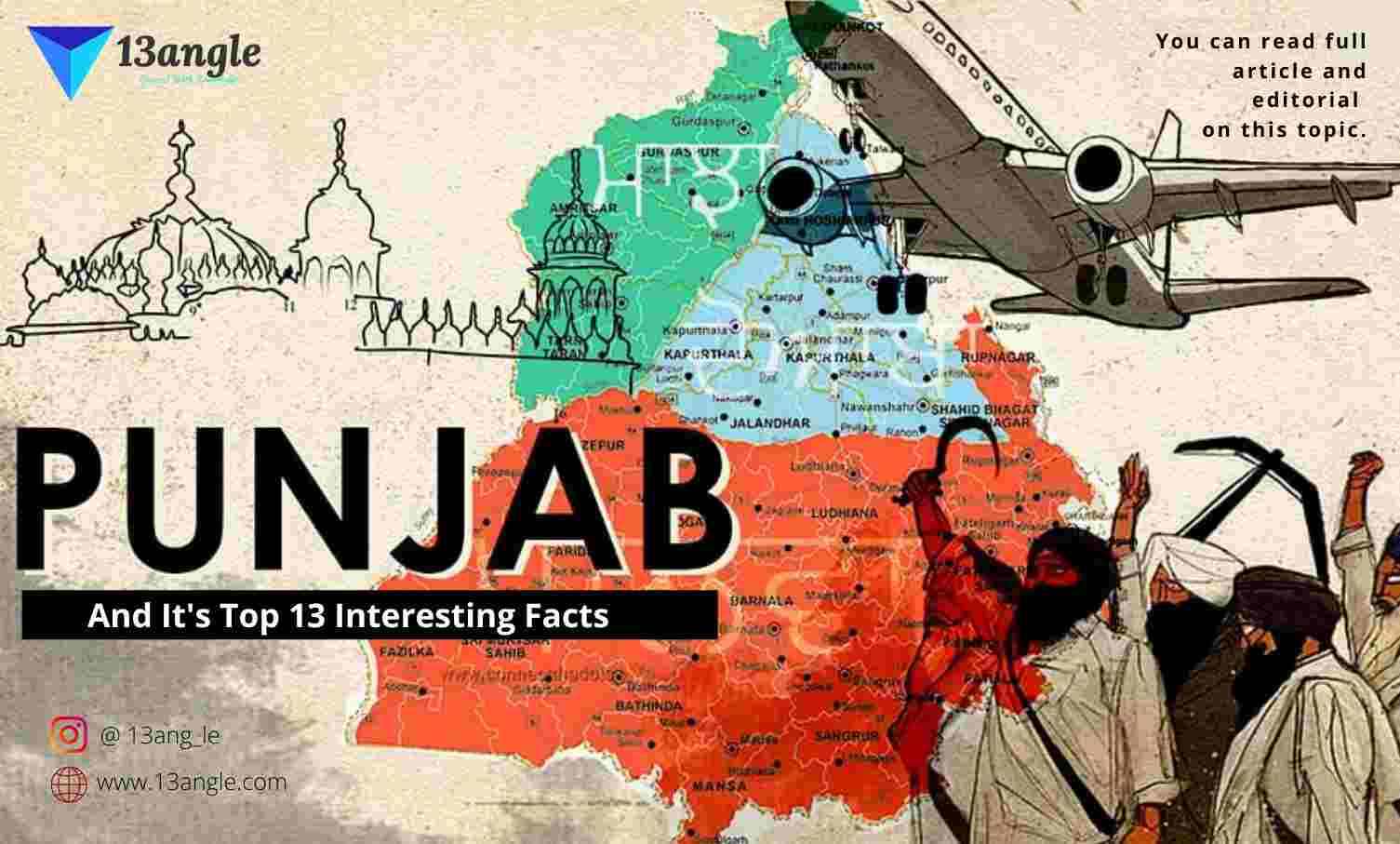- Umang Sagar
- Place, Recent article
Punjab (The Breadbasket Of India)
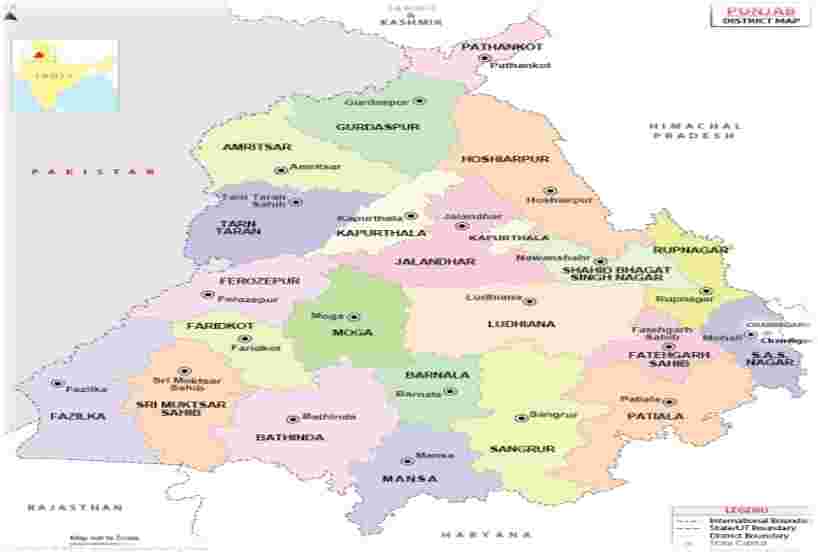
Origin Of Punjab’s Name
Punjab as the name suggests is a compound word for two Persian words, PANJ which means FIVE and AB means WATER and thus signifying it to be the land of waters or five rivers namely Ravi, Jhelum, Chenab, Beas, and Sutlej which are all the important tributaries of the Indus river system.
Although all of these rivers do not flow from the Indian part of the Punjab state as after the India – Pakistan partition in 1947, and now only Sutlej, Ravi, and Beas flow in today’s Punjab state.
Demographic Conditions

1. Geographical Area
The total area of the state is 50,362 square kilometers (19,445 square miles), with the cultivable area being under assured irrigation. Its average elevation is 300 meters (980 ft) above sea level, with a range from 180 meters (590 ft) in the southwest to more than 500 meters (1,600 ft) around the northeast border.
2. Location
- Punjab extends from the latitudes 29.30° North to 32.32° North and longitudes 73.55° East to 76.50° East. Punjab is bounded on the west by Pakistan, on the north by Jammu and Kashmir, on the northeast by Himachal Pradesh, and on the south by Haryana and Rajasthan.
3. Climate

The state has a balanced amalgamation of heat in summer, rain in monsoon, and cold in winter. The three seasons are so distinctly distributed that you can enjoy each of them individually.
Punjab experiences both summer and winter to its extreme. It even receives abundant rainfall, which makes the state a very fertile land. The region lying near the foothills of the Himalayas receives heavy rainfall whereas in the region lying at a distance from the hills, the rainfall is scanty and the temperature is high.
The summer months span from mid-April to the end of June. The rainy season in Punjab is from early July to the end of September. October marks the beginning of the winter season. From December onwards, the winter becomes chilly. The best time to visit Punjab is from October to the end of March.
4. Population
- According to the 2011 Census of India, the total population of Punjab is 2,77,43,338. The decadal change i.e. increase in population from 2001 to 2011 is 13.89%.
5. Cities/Towns
- There are 23 Districts and a total of 168 statutory towns and 69 census towns in Punjab. Thus there are total 237 towns (or say cities) in Punjab. Major cities of Punjab include Mohali, Ludhiana, Amritsar, Patiala and Jalandhar.
6. State Capital
Chandigarh is a union territory and serves as the capital of the states of Punjab and Haryana. It is one of the early planned cities in post-independence India.
Picturesquely located at the foothills of Shivaliks, it is known as one of the best experiments in urban planning and modern architecture in the twentieth century in India. The dream city of India’s first Prime Minister, Sh. Jawahar Lal Nehru, Chandigarh was planned by the famous French architect Le Corbusier.
The foundation stone of the city was laid in 1952. In March 1948, the Government of Punjab, in consultation with the Government of India, approved the area of the foothills of the Shivaliks as the site for the new capital.
The location of the city site was a part of the erstwhile Ambala district as per the 1892-93 gazetteer of District Ambala. Subsequently, at the time of reorganization of the state on 01.11.1966 into Punjab, Haryana, and Himachal Pradesh, the city assumed the unique distinction of being the capital city of both, Punjab and Haryana while it itself was declared as a Union Territory and under the direct control of the Central Government.
History Of Punjab
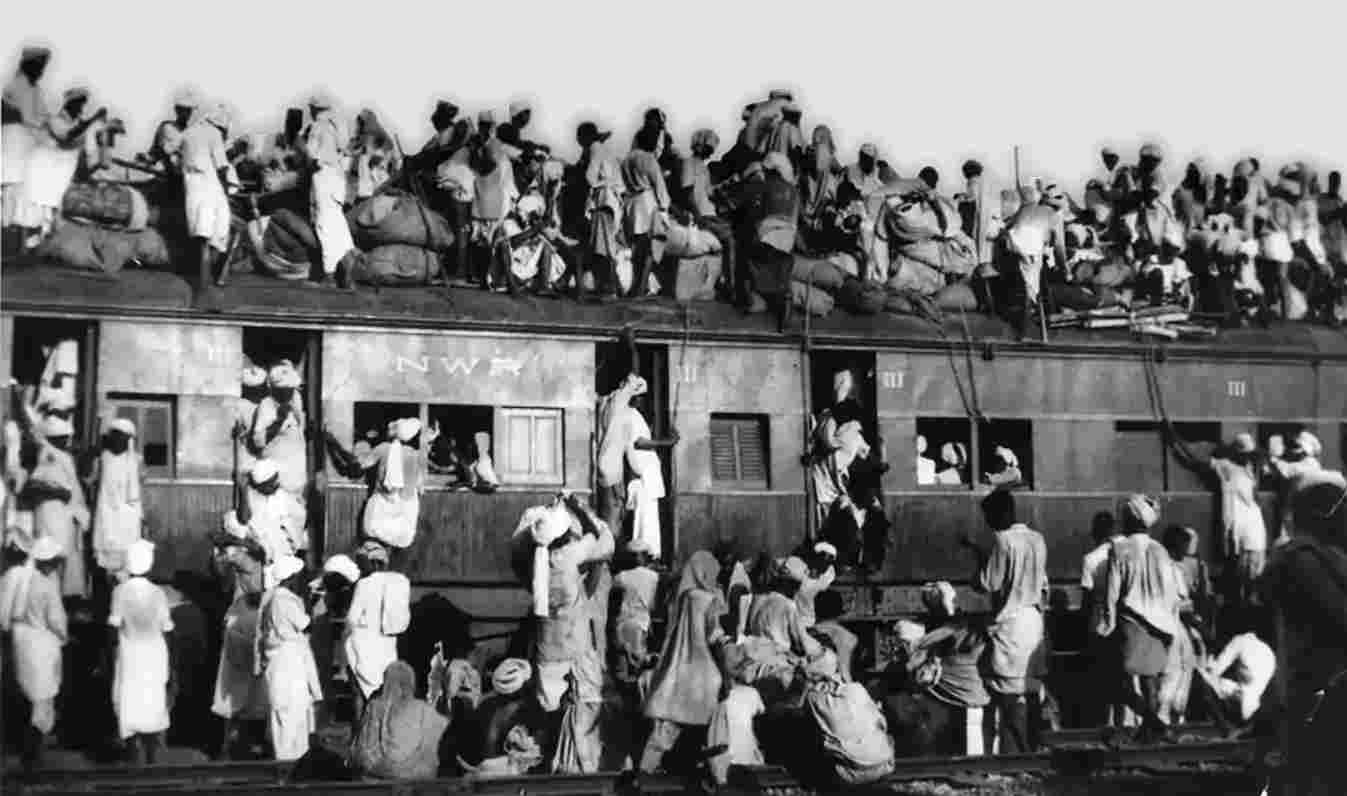
The first known documentation of the word ‘Punjab’ is in the writings of Ibn Batuta, who visited the region in the fourteenth century. The term came into wider use in the second half of the sixteenth century, and was used in the book Tarikh-e-Sher Shah Suri (1580), which describes the construction of a fort by ‘Sher Khan of Punjab’.
Reference of ‘Punjab’ can also be found in volume one of “Ain-e-Akbari”, written by Abul Fazal, where ‘Punjab’ describes the territory that can be divided into provinces of Lahore and Multan.
Similarly, in the second volume of Ain-e-Akbari, the title of a chapter includes the word ‘Panjnad’ in it. However, the first mentioning of the Sanskrit equivalent of ‘Punjab’ occurs in the great epic, the Mahabharata, where it is described as Pancha-nada, which means ‘country of five rivers.
The Mughal King Jahangir also mentions the word Panjab in ‘Tuzk-e-Jahangiri’, derived from Persian and introduced by the Turkic conquerors of India, literally means “five” (panj) “waters” (ab), i.e., the Land of Five Rivers, referring to the five rivers which go through it. It was because of this that it was made the granary of British India. It is one of the most ancient civilizations in the world with a distinguished culture.
The Punjabi language has its origins in the Indo-European family of languages which included Persian and Latin. A land of ethnic and religious diversity, it is the birthplace of a number of religious movements. Some of the prominent ones include Sikhism, Buddhism, and many Sufi schools of Islam.
The Indian State of Punjab was created in 1947 when the partition of India split the former Raj province of Punjab between India and Pakistan. The mostly Muslim western part of the province became Pakistan’s Punjab Province; the mostly Sikh eastern part became India’s Punjab state.
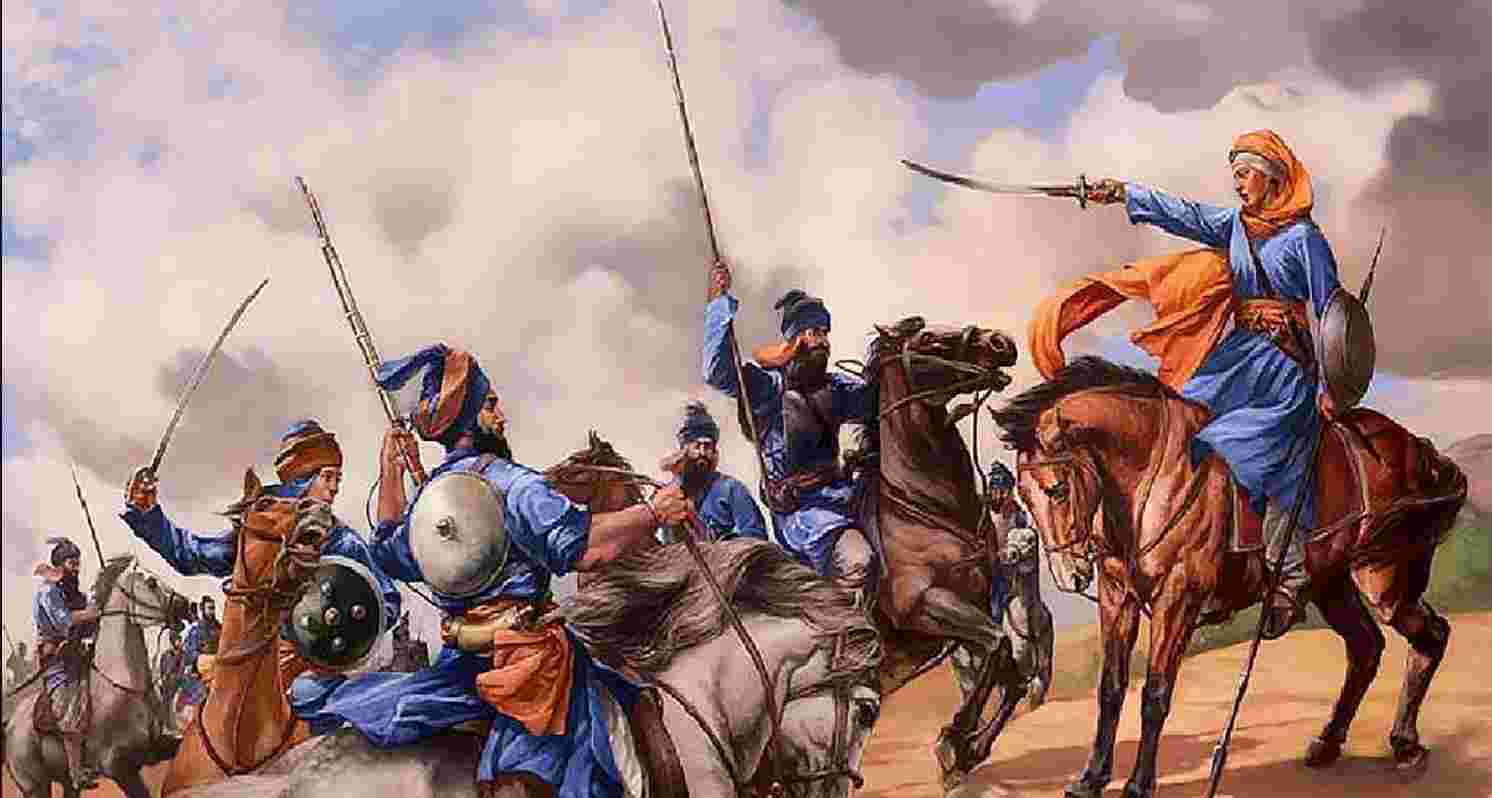
The partition saw many people displaced and much inter-communal violence, as many Sikhs and Hindus lived in the west, and many Muslims lived in the east. Several small Punjabi princely states, including Patiala, also became part of the Indian Punjab.
In 1950, two separate states were created; Punjab included the former Raj province of Punjab, while the princely states of Patiala, Nabha, Jind, Kapurthala, Malerkotla, Faridkot and Kalsia were combined into a new state, the Patiala and East Punjab States Union (PEPSU).
Himachal Pradesh was created as a union territory from several princely states and Kangra District. In 1956, PEPSU was merged into Punjab state, and several northern districts of Punjab in the Himalayas were added to Himachal Pradesh.
Culture
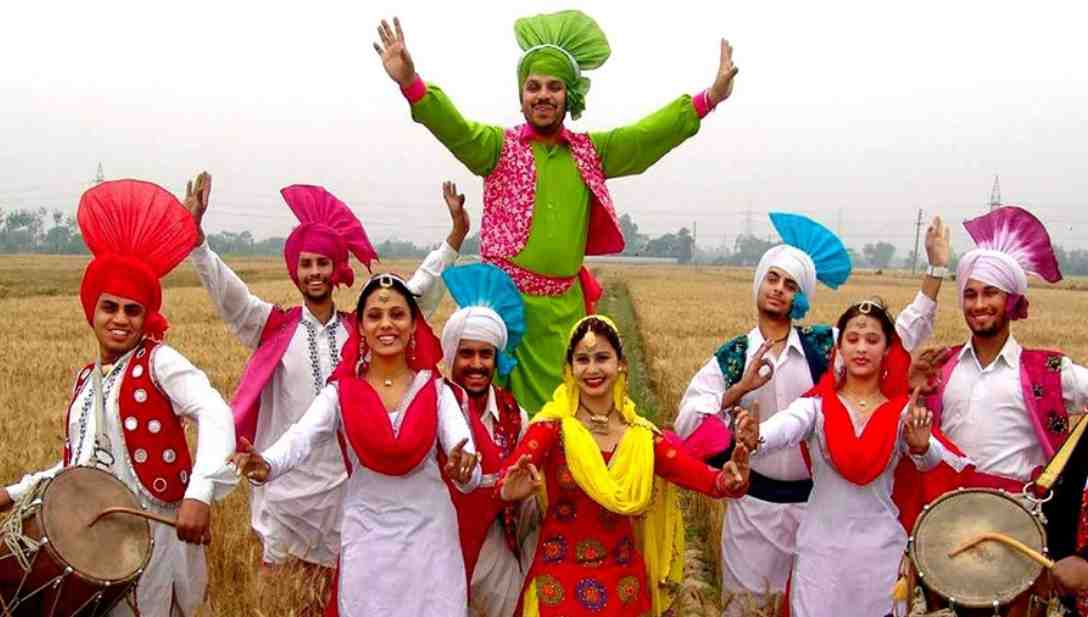
Punjab has one of the oldest and richest cultures in the world. Its diversity and uniqueness are evident in the Punjabi poetry, philosophy, spirituality, education, artistry, music, cuisine, science, technology, military warfare, architecture, traditions, values, and history.
The compassion and high spiritedness exhibited in the lifestyle of the people of Punjab (Punjabis) is hard to miss. While the Punjabis are known for their strong determination, their culture presents a multi-hued heritage of ancient civilizations.
A guest in Punjab is considered as a representative sent by God and is well looked after. Punjabis celebrate numerous religious and seasonal festivals, such as Dussehra, Diwali, Baisakhi, and many more.
There are numerous anniversary celebrations as well in honor of the Gurus (the 10 religious leaders of Sikhism) and various saints. Expressing happiness and gaiety through dance is a typical feature of such festivities, with bhangra, jhumar, and sammi being among the most popular genres.
Giddha, a native Punjabi tradition, is a humorous song-and-dance genre performed by women. In addition to Sikh religious music, semi-classical Mughal forms, such as the khyal dance and the thumri, ghazal, and qawwali vocal performance genres, continue to be popular.
Poetry offers one of the clearest views of the Punjabi mindset. Punjabi Poetry is renowned for its deep meaning, beautiful, exciting and hopeful use of words. Many compilations of Punjabi poetry and literature are being translated throughout the world into many languages. One of the most important pieces of Punjabi literature is that of the revered ‘Guru Granth Sahib’.
The traditional dress for Punjabi men is ‘Punjabi Kurta’ and ‘Tehmat’, especially the popular Mukhtsari style, which is being replaced by the kurta and pajama in modern-day Punjab. The traditional dress for women is the Punjabi Salwar Suit which replaced the traditional Punjabi Ghagra. The Patiala salwar is also very popular.
Cuisine
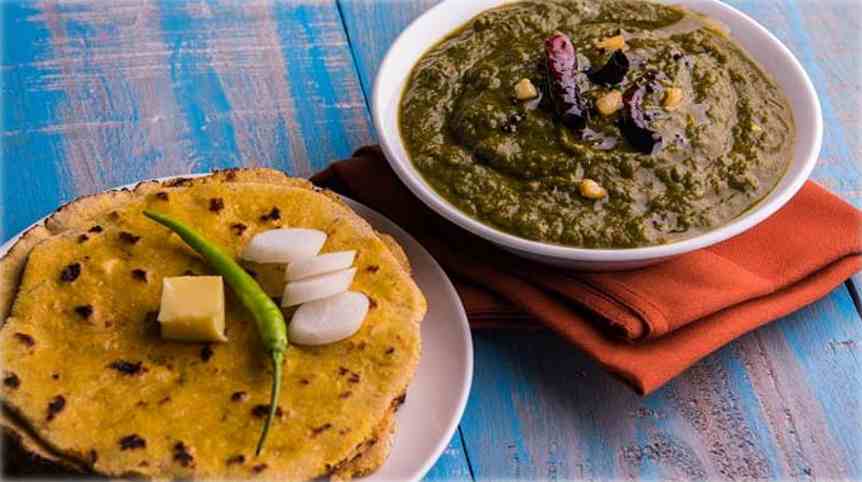
Punjab’s geographical location with relation to the rest of the Sub-continent has meant that this region has had strong Central Asian influences both in its culture and its food.
Punjabi cuisine has become a world leader in the field; so much so that many entrepreneurs who invested in the sector have built large personal fortunes due to its popularity. “Sarso ka saag” and “Makki di roti” are examples of well-known and very famous dishes.
Punjab’s economy has predominantly been agrarian, historically evidenced in the remains of granaries and other artifacts of the Indus Valley Civilization. Dairy products, unleavened flatbreads, pulses, vegetable, and meat curries continue to reflect the rural temper of the state while being wedded to the residual flavors of foreign invasions, such as rice and gravies.
As a result, Punjabi cuisine is among the richest in the country as well as the world. It incorporates generous quantities of milk, curd, butter, and cream in cooking fresh vegetables and meats. In addition to these, Punjabis have created a combination of the northwest frontier cuisine and Mughlai recipes to prepare rich poultry and mutton dishes.
The ubiquitous ‘tandoori chicken’ is very popular. A word of caution is necessary for first-time visitors though, low-fat Punjabi meals are unimaginable and cut no ice with the proud and generous people of Punjab. Their legendary warmth and hospitality assure that anyone who passes through this land will return well-fed.
Indeed, the tradition of langar (community kitchen) initiated by Guru Amardas Ji, came from the belief that food is central to communal bonding. It has since been a remarkable feature of all the Gurudwaras, wherein devotees of all faiths participate in the preparation and service of meals.
Flora And Fauna
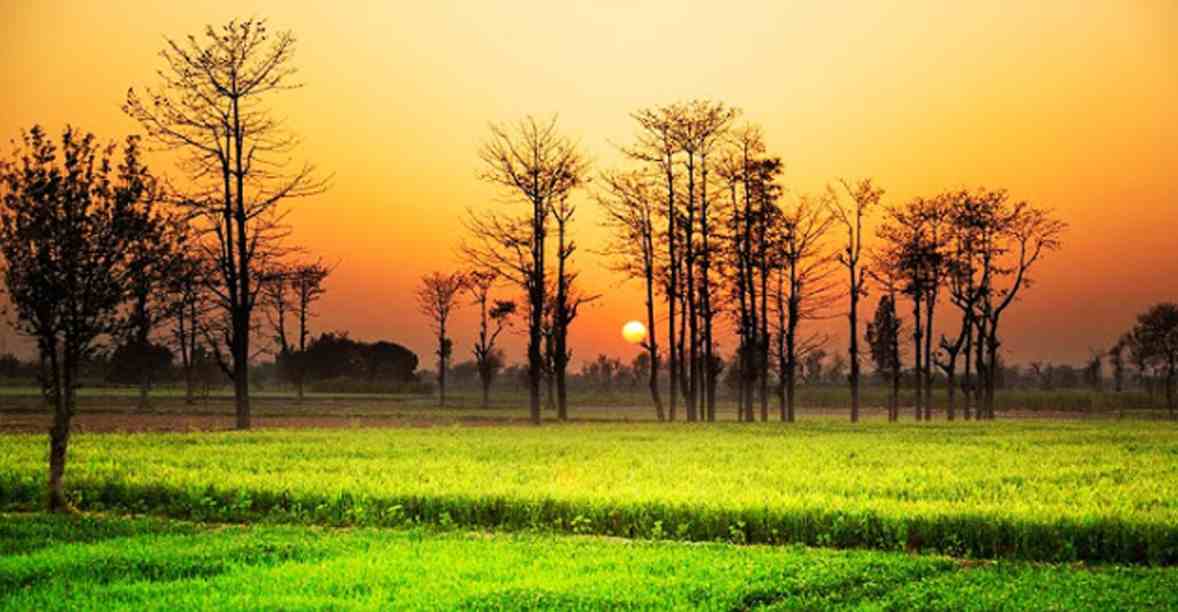
The fauna of the area is rich, with 396 types of birds, 214 kinds of Lepidoptera, 55 varieties of fish, 20 types of reptiles, and 19 kinds of mammals.
The state of Punjab has large wetland areas, bird sanctuaries that house numerous species of birds, and many zoological parks.
Wetlands include the national wetland Hari-Ke-Pattan, the wetland of Kanjli, and the wetlands of Kapurthala Sutlej.
Wildlife sanctuaries include the Harike in the district of Tarn Taran Sahib, the Zoological Park in Rupnagar, Chhatbir Bansar Garden in Sangrur, Aam Khas Bagh in Sirhind, Amritsar’s famous Ram Bagh Palace, Shalimar Garden in Kapurthala, and the famous Baradari Garden in the city of Patiala.
A few of the rivers in Punjab have crocodiles. The extraction of silk from silkworms is another industry that flourishes in the state. Production of bee honey is done in some parts of Punjab.
The southern plains are desert land; hence, camels can be seen. Buffaloes graze around the banks of rivers. The north-eastern part is home to animals like horses. Wildlife sanctuaries have many more species of wild animals like the otter, wild boar, wildcat, fruit bat, hog deer, flying fox, squirrel, and mongoose.
Naturally formed forests can be seen in the Shivalik ranges in the districts of Ropar, Gurdaspur, and Hoshiarpur. Patiala is home to the Bir forest while the wetlands area in Punjab is home to the Mand forest. Botanical gardens exist throughout Punjab.
There is a zoological park and a tiger safari park, as well as three parks dedicated to deer. The state bird is the northern goshawk (baz), the state animal is the blackbuck, the state aquatic animal is the Indus river dolphin, and the state tree is the Shisham.
Festivals Of Punjab
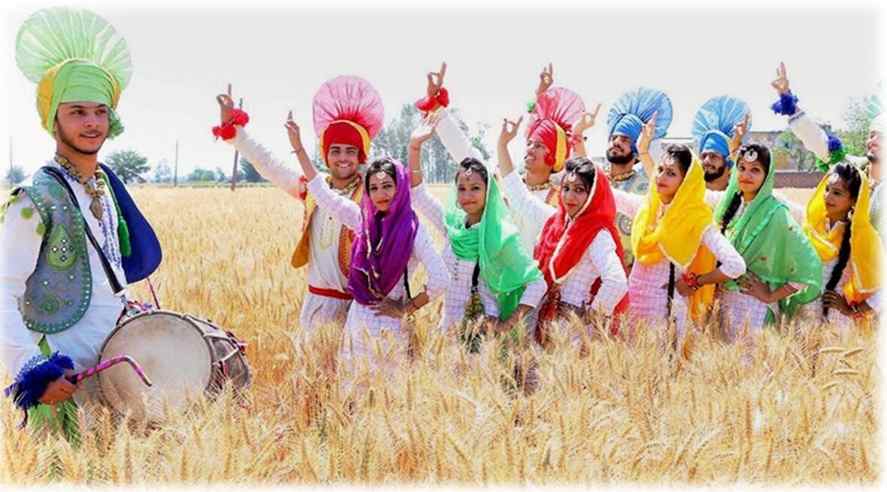
Punjab is a land of bright hues, happy music, and welcoming smiles. All this, combined with sessions of vigorous dancing, gives us the many colorful festivals that the state is known to celebrate.
Lohri- Lohri marks the end of a bitterly cold winter and its celebration is a way of welcoming longer and warmer days in Punjab. Households across the state light bonfires and families dance and sing around them. Traditional foods and local delicacies are prepared and served for dinner. It is also a community festival with many families collecting around a single bonfire.
Baisakhi- Baisakhi holds a lot of significance for Punjabis. It not only marks the spring harvest and the solar New Year in the state but is also celebrated to mark the birth of the Khalsa in Sikhism. Baisakhi is celebrated across the state with visits to gurudwaras, kirtan processions, and community fairs.
Teej- Teeyan, also known as Teej, is a festival celebrated to welcome the onset of the monsoon season. Marked by dancing, music, folk songs, fasting, colorful traditional outfits, and prayers, Teeyan is celebrated in Punjab and across parts of Northern India.
Hola Mohalla- Hola Mohalla is an annual event that spans three days. The celebrations include displays of bravery and military prowess by the Nihang Sikhs involving traditional war techniques and animals. This three-day fest attracts Sikhs from around the state and world to Anandpur Sahib. Meals are served community style in langars and the festival is concluded in an elaborate military-style parade.
Gurupurab- Gurupurab is a celebration related to the lives of the Sikh Gurus, typically their birth or death anniversary. There are a number of Gurupurab’s that are observed throughout the year, with Guru Nanak Dev Ji’s birth anniversary being amongst the major celebrations. For this Gurupurab specifically, people visit gurudwaras, participate in the langar, burst crackers and decorate their homes with lights.
Top 13 Interesting Facts About Punjab
In the Indian and Pakistani Punjab, the Indus Valley Civilization flourished which is considered one of the ancient civilizations. The civilization flourished around the Indus river system.
The modern Indian Punjab came into existence on 31 October 1966 when Himachal Pradesh and Haryana were carved out.
In the late 15th century, Guru Nanak Dev laid the foundation of Sikhism in Punjab. Punjab is the largest state of the Sikh population.
In 1799, under the leadership of Maharaja Ranjit Singh, the Sikh Empire was formed. It was a secular empire based in Punjab. It lasted until 1849.
In the city of Amritsar, the Golden Temple is located which is considered the holiest and most important pilgrimage site of Sikhism. The temple was designed by the fifth Guru Arjan Dev. The Gold was installed above the Gurudwara by Maharaja Ranjit Singh.
There are five Takht (meaning Seat of Authority) in Sikhism. Out of five, three are in Punjab; Akal Takht in the Golden Temple Complex, Takht Sri Damdama Sahib in Bhatinda, and Takht Sri Keshgarh Sahib in Anandpur Sahib. Two other are Takht Sri Patna Sahib in Patna, Bihar, and Takht Sri Hazur Sahib, Nanded, Maharashtra.
Punjab is very famous for its folk dances such as Bhangra, Gidddha, Jhumar, Mirza, Jugni, Dhamaal, Gatka, etc.
Several Rivers are flowing through the state which makes Punjab very fertile. Punjab is also called the Granary of India or Bread Basket of India. It produces 17% of India’s total wheat production, and 11% of India’s rice (Data, according to the 2013 report). Agriculture is the largest industry in the state and about 84% of the land is under cultivation.
The capital of Punjab and Haryana is Chandigarh which is a Union territory. There is also one common High Court for both states which is known as Punjab and Haryana High Court, situated in the capital city of Chandigarh.
Jallianwala Bagh is situated in Amritsar, the largest city of Punjab. On 13 April 1919, the Jallianwala Bagh massacre took place here under the command of Colonel Reginald Dyer in which more than 1500 people died and several got injured.
When the partition of India took place in 1947, Punjab was divided into two parts; Indian Punjab and Pakistani Punjab. Indian Punjab shares its border with the Pakistani Punjab. The Border is about 425 km in length. Every year, the Wagah-Attari border ceremony is held on 14 and 15 December during the Independence Day of Pakistan and India, respectively. Attari is a village in the district of Amritsar, India, and Wagah is a village in the district of Lahore, Pakistan.
The soil of Punjab has given birth to many legends in every field. In Punjab, people have the enthusiasm to be a singer, actor, athlete, etc. Some legends are Gurdas Maan (Singer), Babbu Maan (Singer), Akshay Kumar (Actor), Balbir Singh Sr. (Hockey Player), Kapil Sharma (Comedian), Udham Singh (Hockey Player), Zail Singh (7th President of India), etc.
Punjabis are known for their hospitality. They serve their guest their original tasty food which is very popular in the world. The popular Punjabi dishes are Chicken Tikka, Paratha with Butter, Tandoori Chicken, Amritsari Kulcha, Makke ki roti (Bread of Maize), and Sarson ka Saag (Vegetable of Mustard greens). In beverage, they include very famous ‘Lassi.
Some FAQs Or Also Ask Question
Is Punjabi Pakistani or Indian?
Punjabi’s who live in Indian part of Punjab are considered Indians while the one’s who are a part of the Pakistan’s Punjab state considered Pakistani.
What does Punjab mean?
Punjab means land of 5 rivers where ‘Panj’ means 5 and ‘ab’ means river.
Why is Punjab so famous?
Punjab is famous because of it’s cuisines, it’s language and culture, due to the famous dance forms like Bhangra and Gidha.
Do Punjabis drink alcohol?
It is a myth that all the Punjabi’s are alcoholic, but this is not true, the Namdhari Sikhs do not touch alcohol as it is abandoned as per their religion. The other’s may or may not be in favour of alcohol.
Can a Sikh marry a non-Sikh?
Yes a sikh can marry a non- sikh, there is no bar on intercaste marriage.
Why do Punjabis go to Canada?
Genuinely, it’s a fad amongst Punjabi’s that going to Canada would provide them with a better lifestyle and with greater opportunities, which might not be available in Punjab.
Why do Sikhs not cut their hair?
As per Guru Granth Sahib ji, their religious book, it is abandoned in their religion to trim their hair.




